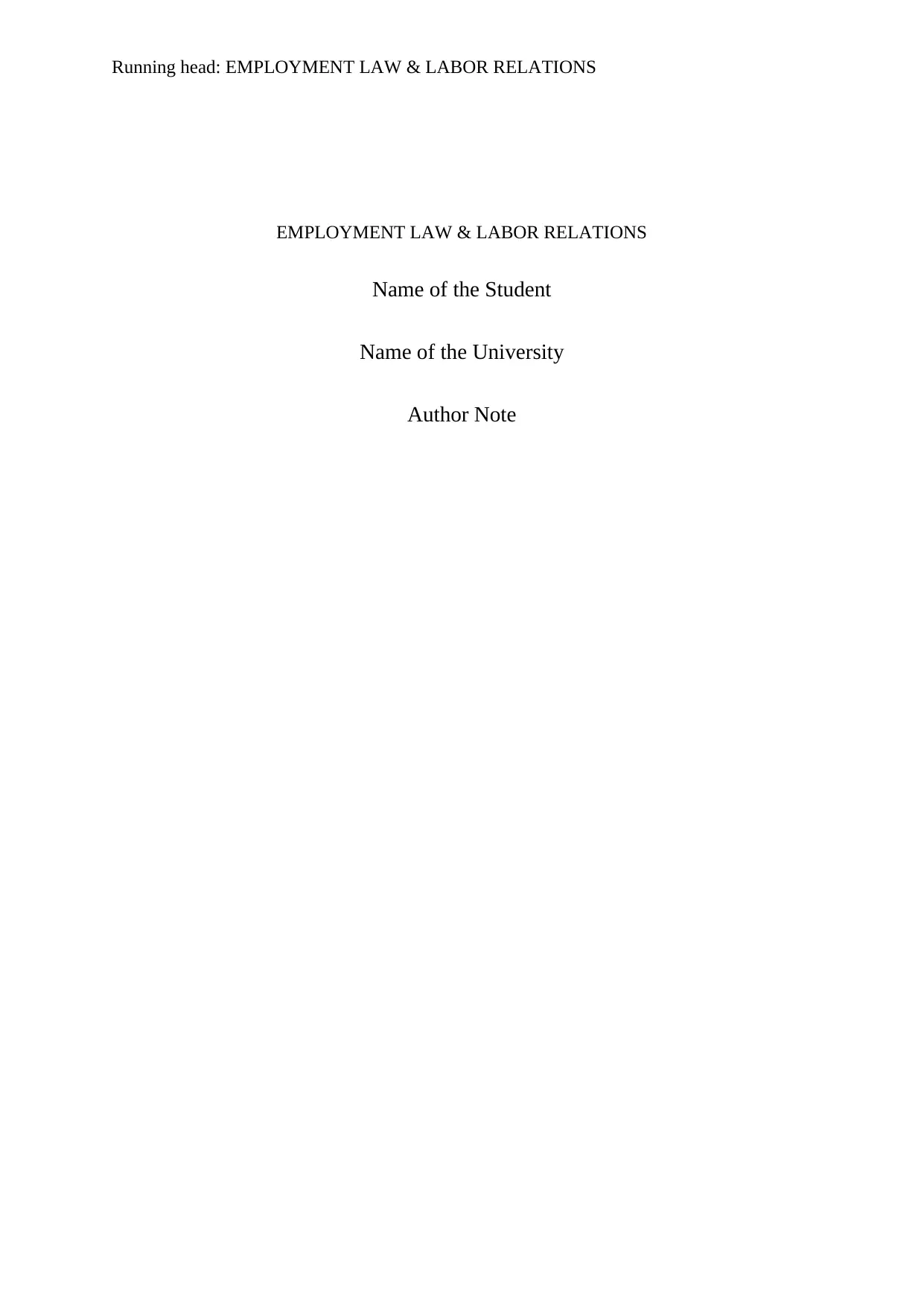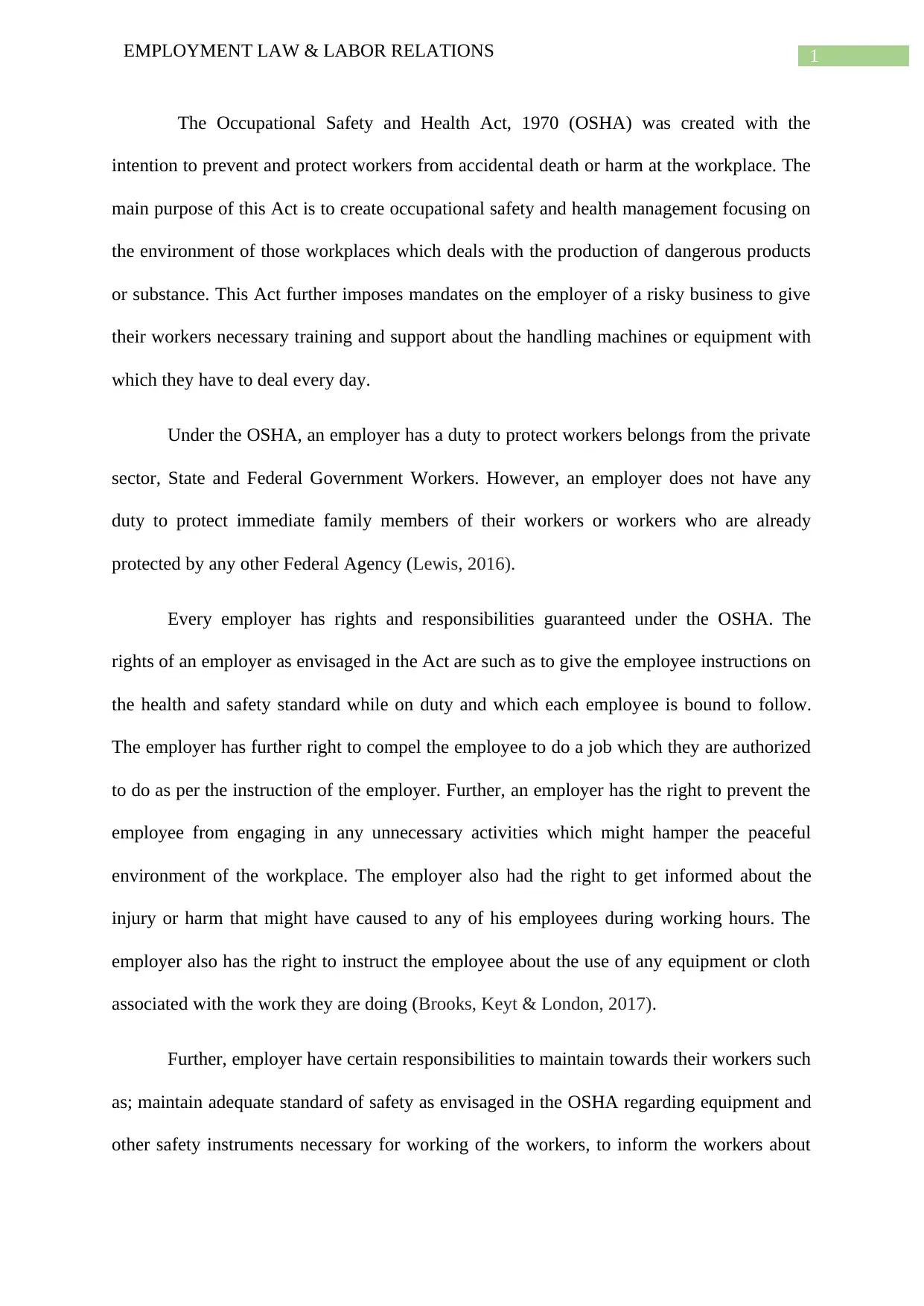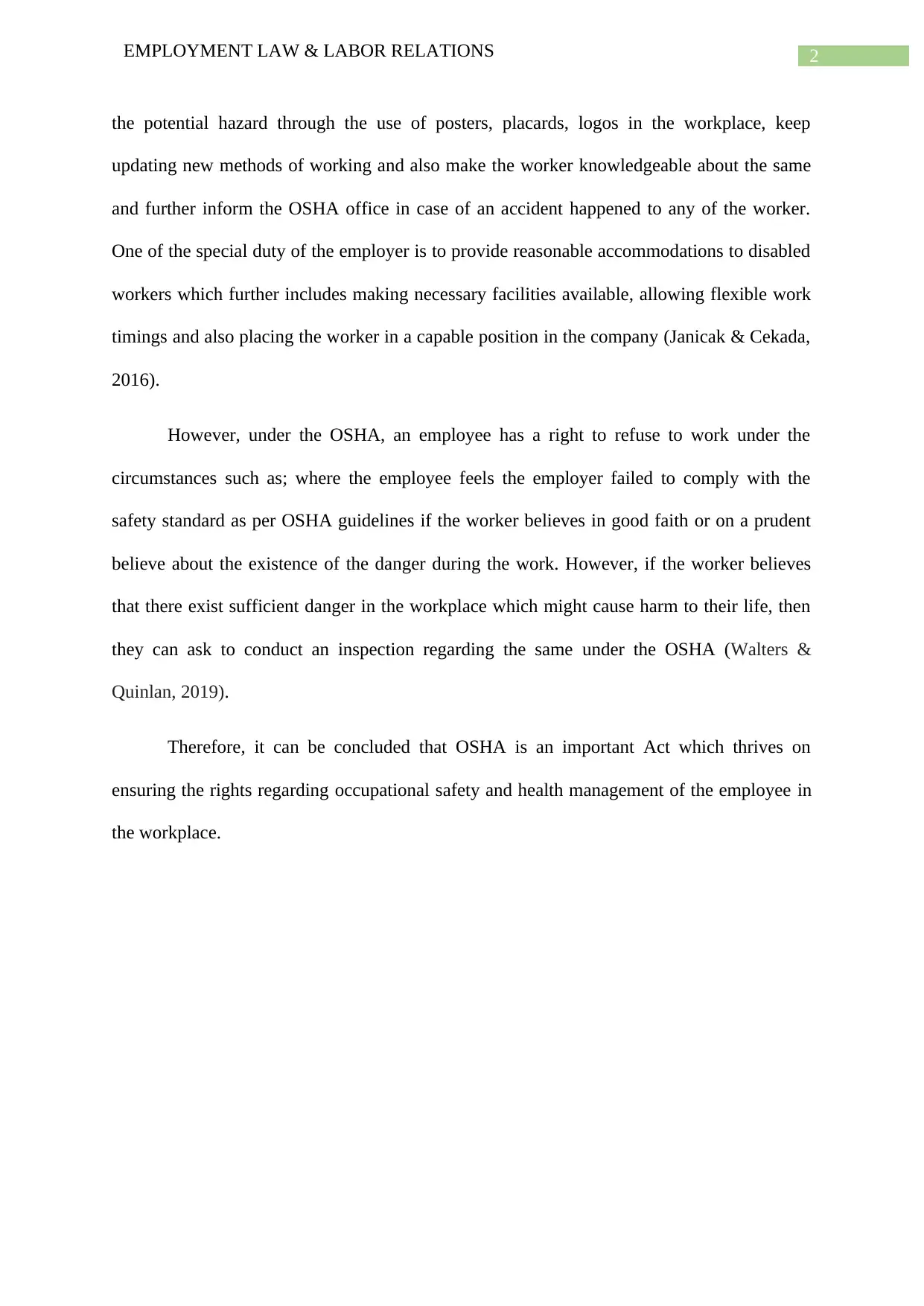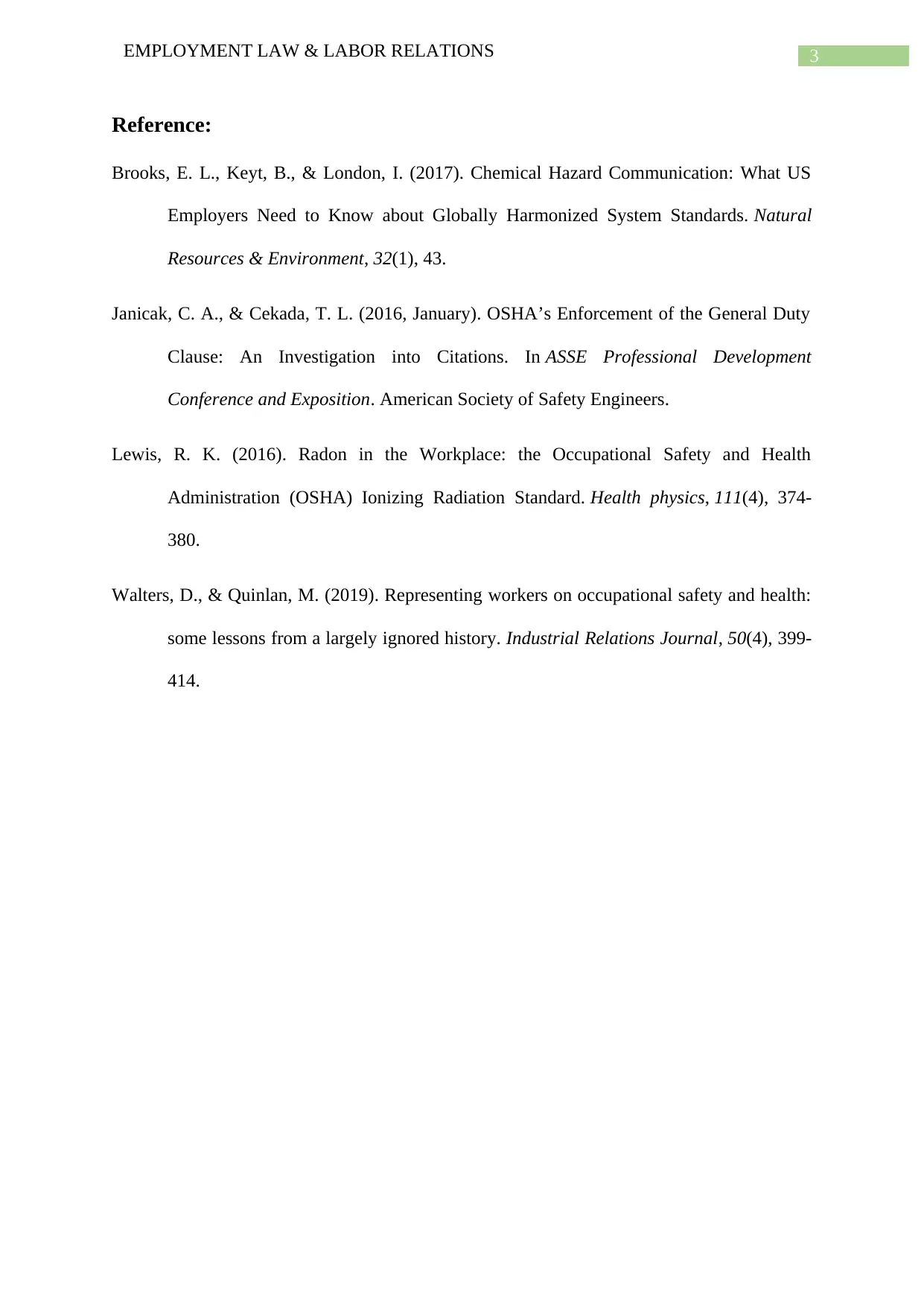Employment Law and Labor Relations: OSHA and Worker Protection Report
VerifiedAdded on 2022/08/17
|4
|789
|12
Report
AI Summary
This report examines the Occupational Safety and Health Act (OSHA) of 1970, focusing on its purpose to prevent workplace accidents and protect workers. It details the Act's mandates on employers to provide training and support, especially in environments with dangerous substances. The report outlines the rights and responsibilities of both employers and employees under OSHA, including employer duties to maintain safety standards and inform workers of hazards, as well as employee rights to refuse unsafe work conditions. The report references key literature to support its analysis, emphasizing the importance of OSHA in ensuring occupational safety and health management within the workplace, ensuring a safe and healthy environment for all employees, and preventing workplace injuries and fatalities through the enforcement of regulations and promoting best practices. This analysis is crucial for understanding the legal framework that governs workplace safety and the balance of power between employers and employees.
1 out of 4











![[object Object]](/_next/static/media/star-bottom.7253800d.svg)